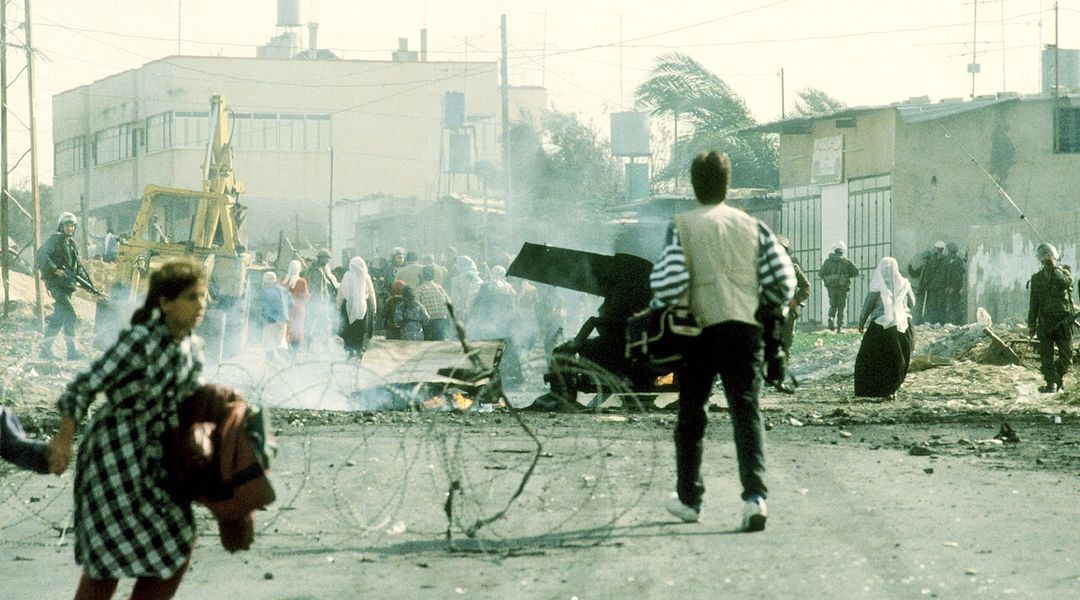On February 4, U.S. President Donald Trump announced that the United States
would “take control of the Gaza Strip,” the Palestinian territory
devastated by the war triggered by the Hamas attack on Israeli soil on October
7, 2023. This narrow strip of land, home to over 2 million Palestinians today,
has passed through various hands since the fall of the Ottoman Empire: first
under British mandate, then Egyptian sovereignty, followed by Israeli
occupation, and ultimately Hamas control. The area has been under an Israeli
blockade since 2007.
1920: Gaza under British rule
On November 2, 1917, British Foreign Secretary
Lord Balfour issued a declaration supporting “the establishment in Palestine of
a national home for the Jewish people.” In the 1920s, the League of Nations
placed Palestine—including Gaza—under British mandate, alongside other former
Ottoman territories. Unlike other mandates, Palestine never became an
independent state.
As Jewish immigrants fleeing persecution
arrived—first from Eastern Europe and later from across the continent—tensions
escalated with the Arab population, leading to repeated uprisings. In 1947,
unable to resolve the conflict, Britain handed the issue over to the newly
formed United Nations.
1948: Gaza becomes part of Egypt
With World War II over, the UN proposed a
partition plan for Palestine, approved on November 29, 1947. The plan called
for separate Jewish and Arab states, with Jerusalem designated as an
international city. Palestinian leaders rejected the plan, viewing it as an
unjust division of their land.
As British forces withdrew, civil war broke out
between Jewish and Palestinian militias. On May 14, 1948, the State of Israel
was declared, occupying 77% of the former British mandate. Nearly half of the
Palestinian population was displaced. In response, Egypt, Iraq, Syria, and
other Arab states invaded the newly formed Israel but were defeated. The war’s
outcome left Gaza under Egyptian control, while Jordan annexed the West Bank.
1967: Israel seizes Gaza in the Six-Day War
In June 1967, Israel launched a preemptive strike
against Egypt, Syria, and Jordan, capturing vast territories in just six days.
The Israeli military took control of Gaza and the Sinai Peninsula from Egypt,
the West Bank and East Jerusalem from Jordan, and the Golan Heights from Syria.
While Israel returned Sinai to Egypt in 1980 and
withdrew from Gaza in 2005, it still controls East Jerusalem and the Golan
Heights—annexations not recognized by the international community.
2007: Hamas takes over Gaza
Following Israel’s 2005 disengagement from Gaza,
the militant group Hamas, which calls for Israel’s destruction, gained power.
Hamas won the 2006 Palestinian legislative elections and seized full control of
Gaza in 2007 after violent clashes with its rival, Fatah.
The United States designated Hamas a terrorist
organization in 1997, citing its history of suicide bombings, hostage-taking,
and rocket attacks. Since 2007, Hamas has launched thousands of rockets at
Israeli territory, while Israel has enforced a strict blockade on Gaza, citing
security concerns.
2008: The first Gaza war begins
In December 2008, Israel launched “Operation Cast
Lead,” a three-week military campaign aimed at stopping Hamas rocket fire and
dismantling smuggling tunnels along the Egyptian border. The offensive resulted
in the deaths of approximately 1,400 Palestinians and 13 Israelis, according to
Amnesty International, which accused both sides of potential war crimes.
Despite Israel’s military action, Hamas remained
in power, and repeated conflicts erupted in the following years.
2023: Hamas attack and Israeli retaliation
On October 7, 2023, Hamas launched an
unprecedented terror attack, infiltrating Israeli communities near Gaza and
massacring civilians, including attendees of a music festival. The attack left
approximately 1,200 Israelis dead, and 251 people were taken hostage.
Israel responded with a massive military
offensive in Gaza, which, according to Hamas-run health authorities—whose
numbers are considered reliable by the UN—resulted in over 47,000 Palestinian
deaths, most of them civilians.
2025:
Ceasefire and path to reconstruction
After 15 months of war, a ceasefire between
Israel and Hamas took effect on January 19, 2025. Under the agreement’s first
phase, Israel agreed to release 737 Palestinian prisoners in exchange for 33
hostages. The second phase is expected to secure the release of the remaining
captives and bring a formal end to hostilities. The final stage focuses on
Gaza’s reconstruction and the return of deceased hostages’ remains.
As the region navigates an uncertain future,
Trump’s latest proposal to assert U.S. control over Gaza adds yet another layer
of complexity to an already volatile situation.
